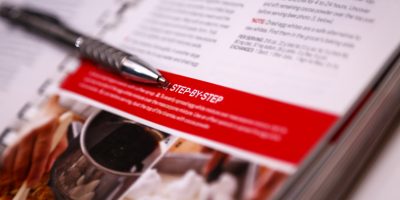Many students will benefit from a degree of preplanned structure and habit when it comes to study space. Here are some thoughts to consider when creating a study space for your student.
General Principle: Focus on what you want to accomplish, not how you want things to look.
Location
Start your thinking from the end of the school day. Consider the “Drop Zone” and the “Pickup Zone” problem:
Through which door does the student enter? Does s/he have a place here to leave coats, shoes, skateboard, etc.? Is this also where the backpack gets dropped? Where would you like the backpack to be when it comes time to start homework?
Is that the same place you want it to be when homework is done so that it will be ready to go in the morning? [Maybe your Drop Zone should be by the entry door– or maybe there is just a Pickup zone where you will put backpacks etc. when all work is done and you want everything that needs to leave the house in one place]
What is the first thing you want him/her to do after school? Have a snack? Most kids probably head to the kitchen. Parents of some kids may want to use this time to preview homework to set up a plan: What do you need to get done? How long will it take? What would be a good order to do this in? What parts will require parent help? What needs to get done before you are tired? [Maybe your Drop Zone should be in the kitchen]
Is the main study space is in the student’s bedroom? [Maybe your Drop Zone should be in the bedroom . . . but will s/he really use that?]
Is the best study space a private one or public one (kitchen counter, dining room table, etc.)? Some kids want to be in the middle of the action for their homework and others want to be away from it all.
Advantages:
- Maybe they will work better where they don’t feel isolated.
- Parents can assist more readily if in public area.
- Parents can monitor attention and effort better in public area.
- This allows the child’s bedroom to be a more private space that becomes increasingly important as they get older.
- If the child’s room is shared, coming into the room to help one child with homework can be an invasion of the privacy of the other child.
- Computer activities in public areas can be monitored; game playing and internet usage can be supervised.
Disadvantages:
- If they want to be in the middle of things, can they actually handle it? Is there too much distraction?
- Public spaces are usually not designed for the best ergonomics. What about the chair height, lighting, etc?
- Can s/he leave things out for several days if working on a major project, or will these things be a nuisance to others or risk being disturbed?
- Can you make all of the tools available in a public area or will they have to be brought out from his/her room? Public tool center means tools are shared with others and does not encourage a sense of ownership.
Work Surfaces
If a table is purchased, make sure its size is adequate so that your student is not too close to the screen.
Allow for a writing area that is not encumbered by the computer keyboard.
Computer should be straight ahead, not on an angle. This might mean you can move keyboard aside and do other work in front of computer, or might suggest a separate work area for non-computer work.
Allow for room for books and materials both to the right and the left of the computer.
Keyboard trays tend to be too narrow. There should be room for the keyboard AND mouse on the same plane as the keyboard.
Seating
Ditch the decorator chair. Get a utilitarian chair that allows for adjustable height as the child grows.
Lighting
Desk should bring lighting in from the side, not directly in front (strain on the eyes when looking at a monitor with a window behind it) or behind (glare on the monitor).
Consider window coverings to control glare on the computer, but realize most kids won’t take the time to regulate this.
Storage
Explore your favorite household goods store for a variety of storage containers, trays, baskets, notebooks, labels, tubs, boxes, etc.
Some students will benefit from a photographic model of each area of the room in order to remember specifically how/where things go.
Tools
A dictionary is important. Computer-based or paperback is far superior to hardback for ease and speed of scanning.
Look for a dictionary that is appropriate to the age of the child. Some word processing software has dictionaries with definitions, but most are just for spelling.
Thesaurus is important, but using the one on the computer is far more effective than a book.
Have a variety of writing and drawing implements, including pencils, sharpener, colored pencils, multiple colors of highlighters, ball-point pens, erasable ball-point pens, fine-tipped colored markers, 6-inch ruler, 12-inch ruler, etc. These are great “stocking stuffers” and introduce novelty and creativity.





